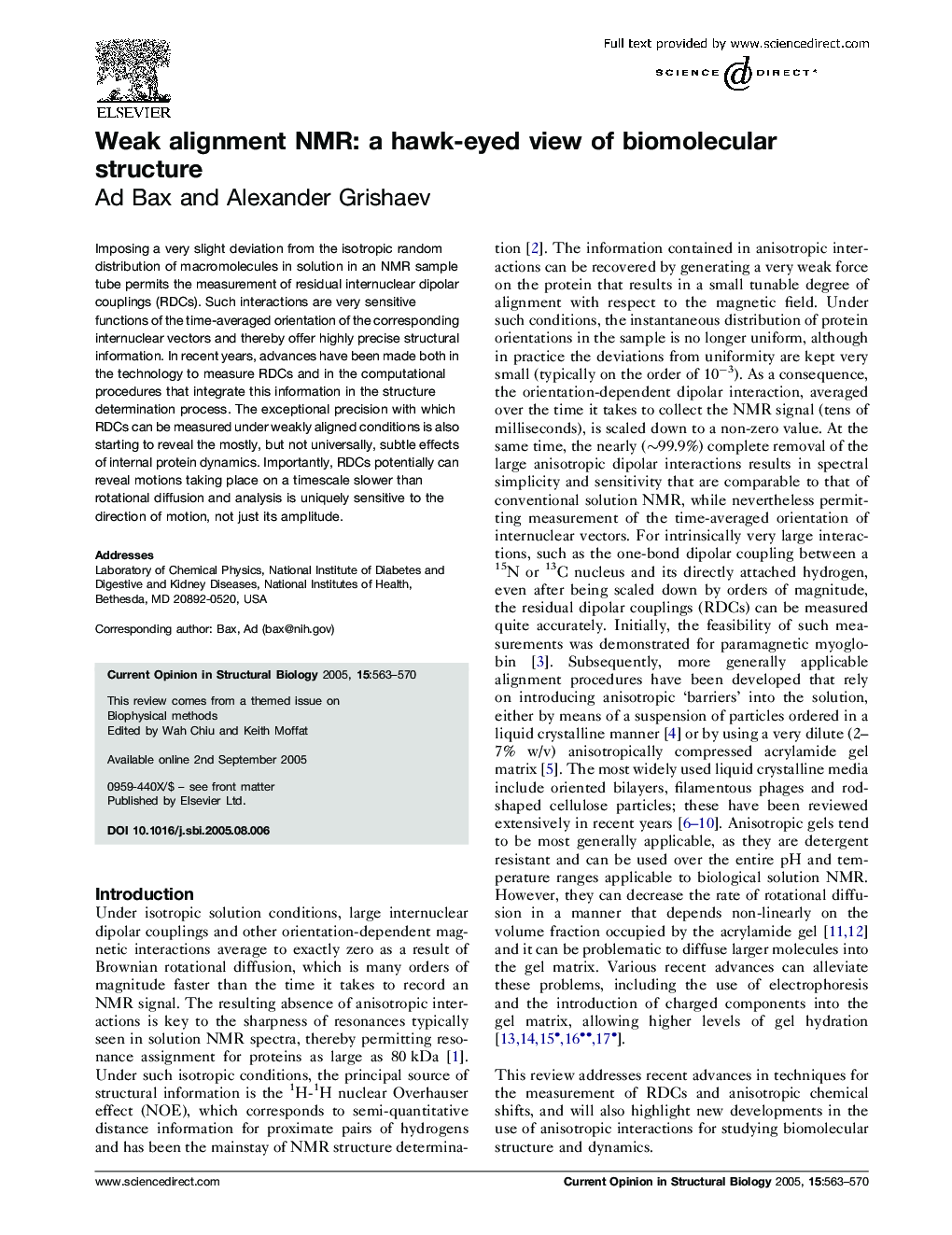| Article ID | Journal | Published Year | Pages | File Type |
|---|---|---|---|---|
| 10822753 | Current Opinion in Structural Biology | 2005 | 8 Pages |
Abstract
Imposing a very slight deviation from the isotropic random distribution of macromolecules in solution in an NMR sample tube permits the measurement of residual internuclear dipolar couplings (RDCs). Such interactions are very sensitive functions of the time-averaged orientation of the corresponding internuclear vectors and thereby offer highly precise structural information. In recent years, advances have been made both in the technology to measure RDCs and in the computational procedures that integrate this information in the structure determination process. The exceptional precision with which RDCs can be measured under weakly aligned conditions is also starting to reveal the mostly, but not universally, subtle effects of internal protein dynamics. Importantly, RDCs potentially can reveal motions taking place on a timescale slower than rotational diffusion and analysis is uniquely sensitive to the direction of motion, not just its amplitude.
Related Topics
Life Sciences
Biochemistry, Genetics and Molecular Biology
Biochemistry
Authors
Ad Bax, Alexander Grishaev,
